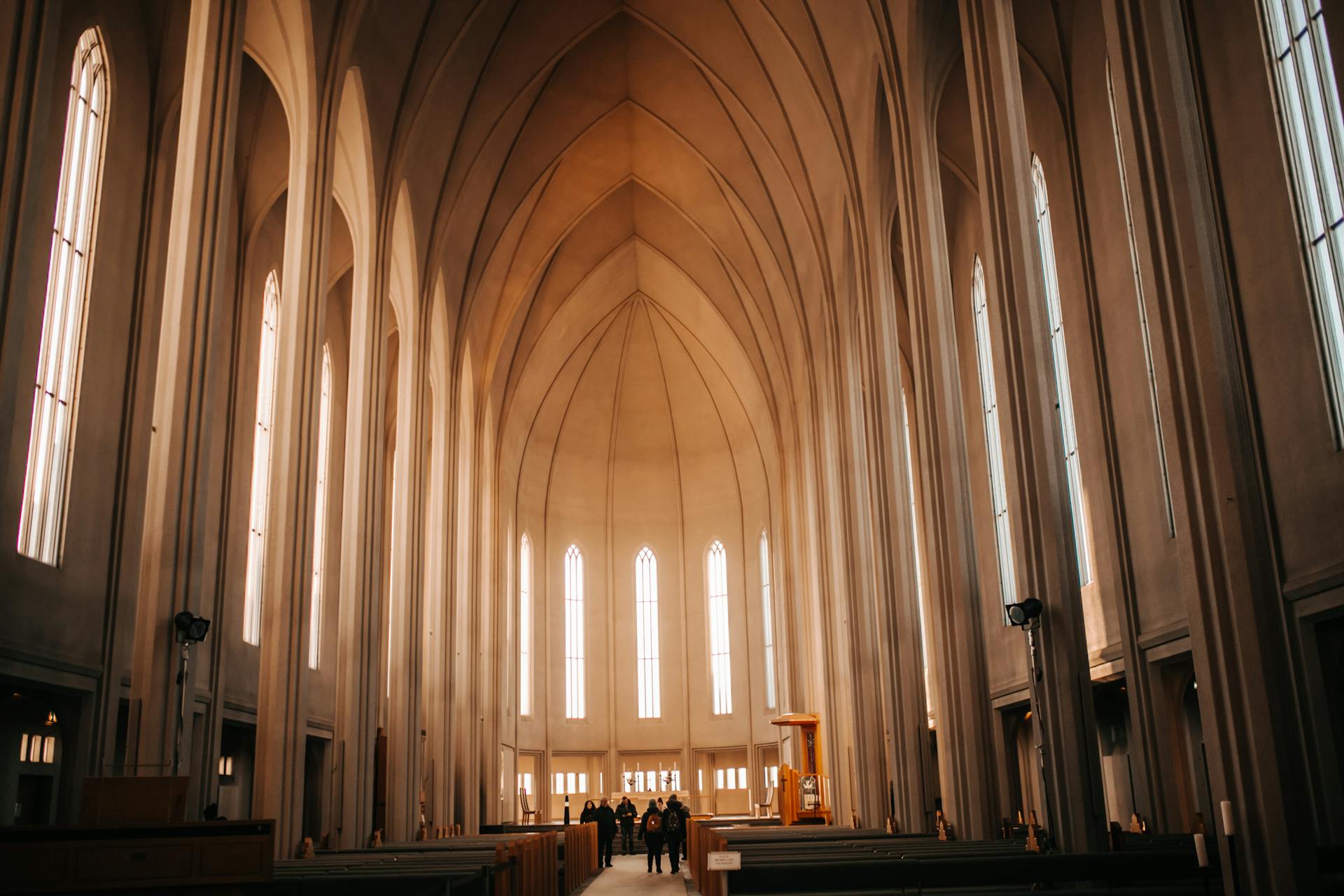Have you ever found yourself dreaming of a space where simplicity and nature coalesce into a serene oasis? If the clutter of everyday life has you longing for a more harmonious environment, then Icelandic minimalist architecture might just be the inspiration you’re seeking. In Reykjavik, the capital of Iceland, design and nature are intertwined in a uniquely beautiful way, offering lessons in how to create spaces that are both aesthetically pleasing and deeply connected to the natural world. Let’s explore how this intriguing blend of minimalism and nature is redefining architectural norms and inspiring people around the globe.
The Essence of Icelandic Minimalist Architecture
Icelandic minimalist architecture is all about simplicity and functionality. It’s a design philosophy that strips away the unnecessary and emphasizes the essential. In Reykjavik, this approach to architecture has been embraced wholeheartedly, resulting in buildings that are not only visually stunning but also seamlessly integrated with their natural surroundings. This architectural style often features clean lines, open spaces, and an abundance of natural light. The use of local materials, such as stone and wood, is prevalent, allowing the structures to blend in with the rugged Icelandic landscape.
The architects in Reykjavik have a knack for using the environment as a canvas. The minimalist design is not just about removing excess; it’s about creating a space that speaks to the soul. The focus is on creating harmony between the indoor and outdoor spaces, ensuring that the architecture complements the natural beauty rather than competes with it. This results in homes and public buildings that feel like a natural extension of the Icelandic landscape, providing a peaceful retreat from the chaos of modern life.
Natural Elements in Design
Incorporating natural elements into design is a hallmark of Icelandic minimalist architecture. Reykjavik’s architects often use large windows to frame the breathtaking views of the surrounding landscapes, making nature an integral part of the interior decor. This connection to the outdoors not only enhances the aesthetic appeal of the buildings but also promotes a sense of well-being. Natural light is abundant, with strategically placed windows that allow the ever-changing sky to paint the interiors with different hues throughout the day.
Furthermore, the use of sustainable materials is a key principle in Icelandic architecture. Reclaimed wood, stone, and other natural materials are preferred, reflecting a commitment to environmental responsibility. This eco-friendly approach not only reduces the carbon footprint but also ensures that the structures are in harmony with the earth. By prioritizing sustainability, Reykjavik’s architects are setting an example for the world, proving that it’s possible to create beautiful and functional spaces without sacrificing the environment.
The Power of Simplicity
Simplicity is at the heart of Icelandic minimalist architecture. In a world that often values excess, this design philosophy reminds us of the beauty that lies in simplicity. Reykjavik’s minimalist buildings are characterized by their uncluttered interiors and straightforward designs. The focus is on creating spaces that are functional and calming, without the distraction of unnecessary ornamentation. This simplicity extends to the color palette as well, with neutral tones that echo the natural surroundings.
This approach to design encourages a mindful way of living. By eliminating clutter and focusing on the essentials, Icelandic minimalist architecture creates environments that promote relaxation and clarity. The simplicity in design allows for more flexibility in how the space is used, adapting to the needs of the people who inhabit it. It’s a reminder that sometimes, less truly is more, and that by focusing on what’s important, we can create spaces that nourish the soul.
Influences from Iceland’s Geography
Iceland’s unique geography plays a significant role in shaping its minimalist architecture. The dramatic landscapes, with their volcanic formations, glaciers, and geysers, provide endless inspiration for architects in Reykjavik. This connection to the land is evident in the way buildings are designed to complement their natural surroundings. The rugged beauty of Iceland’s geography is mirrored in the clean lines and organic forms of its architecture, creating a seamless transition between the built environment and the natural world.
Moreover, the harsh Icelandic climate has influenced the architectural style in Reykjavik. The need for energy efficiency and insulation against the cold has led to innovative design solutions. Buildings are constructed to withstand the elements, with features like triple-glazed windows and geothermal heating systems. These practical considerations are integrated into the minimalist design, ensuring that the architecture not only looks good but also functions effectively in Iceland’s challenging environment.
Cultural Influences on Architecture
The cultural heritage of Iceland also influences its minimalist architecture. Reykjavik’s design aesthetic is deeply rooted in the country’s history and traditions. The emphasis on community and the connection to nature are reflected in the way buildings are designed. Public spaces are often integrated with nature, encouraging social interaction and a sense of community. This cultural influence is evident in the open-plan designs and communal areas that are commonly found in Icelandic architecture.
Iceland’s architectural style also reflects the country’s values of sustainability and simplicity. The use of local materials and the focus on eco-friendly design are not just trends but are ingrained in the Icelandic way of life. This commitment to sustainability is a reflection of the country’s respect for its natural resources and a desire to preserve them for future generations. By incorporating these cultural values into their designs, architects in Reykjavik are creating spaces that are both functional and meaningful.
The Role of Technology in Minimalist Design
Technology plays a crucial role in the development of Icelandic minimalist architecture. In Reykjavik, architects leverage advanced technology to enhance the functionality and sustainability of their designs. Smart home systems, energy-efficient appliances, and innovative construction techniques are integrated into the minimalist design, ensuring that the buildings are not only aesthetically pleasing but also highly efficient.
The use of technology in design also allows for greater customization and flexibility. Architects can create spaces that are tailored to the specific needs of their clients, ensuring that the minimalist design is both practical and personal. This integration of technology and design is a testament to the innovative spirit of Reykjavik’s architects, who are constantly pushing the boundaries of what’s possible in minimalist architecture.

Minimalism in Urban Spaces
In Reykjavik, minimalist architecture is not limited to residential buildings but extends to urban spaces as well. The city’s public architecture embraces the principles of minimalism, creating urban environments that are functional, sustainable, and aesthetically pleasing. Public buildings, parks, and plazas are designed with simplicity in mind, providing spaces that are both beautiful and accessible to all.
The integration of green spaces within the urban landscape is a key feature of Reykjavik’s minimalist architecture. These areas provide a natural respite from the hustle and bustle of city life, promoting a sense of tranquility and well-being. By incorporating nature into urban design, Reykjavik is setting a new standard for cities around the world, demonstrating that it’s possible to create urban environments that are both livable and environmentally friendly.
The Global Influence of Icelandic Minimalism
Icelandic minimalist architecture is gaining recognition on a global scale, inspiring architects and designers around the world. The principles of simplicity, functionality, and sustainability resonate with those seeking to create spaces that are both beautiful and responsible. Reykjavik’s approach to architecture is influencing design trends worldwide, encouraging a shift towards more mindful and eco-friendly practices.
This global influence is a testament to the power of Icelandic minimalism. By showcasing the beauty of simplicity and the importance of connecting with nature, Reykjavik’s architects are inspiring a new generation of designers to rethink the way we build our environments. The impact of Icelandic minimalist architecture is far-reaching, and its principles are being embraced by those who value thoughtful and sustainable design.
Challenges in Embracing Minimalism
Despite its appeal, adopting Icelandic minimalist architecture can present challenges. For many, the idea of living with less can be daunting. The minimalist design requires a shift in mindset, where the focus is on quality over quantity. This can be difficult for those accustomed to a more materialistic lifestyle, where possessions are often equated with success.
However, the benefits of embracing minimalism are substantial. By focusing on the essentials, individuals can create spaces that promote clarity, peace, and well-being. The challenge lies in letting go of the unnecessary and embracing the beauty of simplicity. For those willing to make the shift, Icelandic minimalist architecture offers a blueprint for a more meaningful and sustainable way of living.
Case Studies: Reykjavik’s Architectural Gems
Reykjavik is home to several architectural gems that exemplify the principles of Icelandic minimalist architecture. One notable example is the Harpa Concert Hall, a stunning structure that combines minimalist design with innovative technology. Its geometric facade reflects the surrounding landscape, creating a visual dialogue between the building and its environment. Harpa is a testament to the power of minimalist design, showcasing how simplicity and elegance can coexist.
Another example is the Nordic House, a cultural institution that blends Nordic and Icelandic architectural styles. Designed by renowned architect Alvar Aalto, the building features clean lines and a harmonious connection with nature. The Nordic House is a prime example of how minimalist architecture can create spaces that are both functional and inspiring, offering a sanctuary for cultural exchange and creativity.
The Future of Icelandic Minimalism
The future of Icelandic minimalist architecture looks promising, with Reykjavik leading the way in innovative and sustainable design. As the world becomes increasingly aware of the importance of environmental responsibility, the principles of Icelandic minimalism are likely to gain even more traction. Architects in Reykjavik continue to push the boundaries of design, exploring new ways to integrate technology and sustainability into their projects.
The future holds exciting possibilities for the evolution of Icelandic minimalist architecture. With a focus on innovation and a commitment to sustainability, Reykjavik’s architects are paving the way for a new era of design. The principles of simplicity, functionality, and connection to nature will continue to guide the development of architectural spaces that are both beautiful and purposeful.
Conclusion
Icelandic minimalist architecture offers a compelling vision for the future of design. By embracing simplicity, functionality, and a deep connection to nature, Reykjavik’s architects are creating spaces that inspire and nurture the soul. The principles of Icelandic minimalism are not just about aesthetics; they are a way of life, promoting sustainability and mindfulness in a world that often values excess. As we look to the future, the lessons of Reykjavik’s architecture offer a roadmap for creating environments that are both responsible and enriching. Whether you’re an architect, a design enthusiast, or someone seeking a more meaningful way of living, Icelandic minimalist architecture provides a wealth of inspiration and insight.

Recent Posts
15 Floor Plan Graphic Styles That Will Elevate Your Presentation Game
The Role of Shadows in Architectural Storytelling
When Furniture Becomes Architecture: Blurring the Line